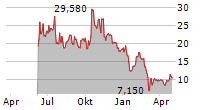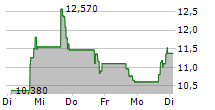
In the PET trial, RAP-219 achieved and exceeded target receptor occupancy, increasing support for the dosing regimen utilized in the ongoing Phase 2a trial in focal epilepsy; restricted neuroanatomical expression of TARP?8 was confirmed
In the MAD-2 trial, RAP-219 was observed to be generally well tolerated with faster titration and higher exposures than in the initial MAD trial
Data underscore the potential broad therapeutic index of RAP-219 and dosing flexibility
Ongoing Phase 2a trial of RAP-219 in focal epilepsy is on track and topline data is expected in mid-2025
BOSTON and SAN DIEGO, Jan. 09, 2025 (GLOBE NEWSWIRE) -- Rapport Therapeutics, Inc. (Nasdaq: RAPP), a clinical-stage biotechnology company dedicated to the discovery and development of small molecule precision medicines for patients suffering from central nervous system (CNS) disorders, today announced results from its positron emission tomography (PET) trial and second multiple ascending dose (MAD-2) trial for RAP-219. Data from the trials demonstrated that RAP-219 achieved target receptor occupancy (RO) associated with maximal efficacy in prior preclinical models within five days of dosing while maintaining a differentiated tolerability profile.
"These Phase 1 results reinforce our belief in RAP-219's distinct profile and potential to deliver transformative outcomes for patients," said Steve Paul, M.D., Rapport cofounder and chair of the board of directors. "The data demonstrate that neuroanatomical specificity can be achieved through RAP-219's selective targeting of a receptor-associated protein, and RAP-219 was able to quickly achieve target engagement and therapeutic exposures in the brain while maintaining a generally favorable tolerability profile. Additionally, the data provide further support for the dosing regimen selected for our ongoing Phase 2a trial in focal epilepsy."
A total of four Phase 1 trials have been conducted to date, with 100 healthy volunteers exposed to RAP-219. In these trials, RAP-219 was generally well tolerated in multiple repeat-dose studies with up to 28 days of dosing, with no serious adverse events (SAEs), no treatment emergent adverse events (TEAEs) greater than Grade 2, and no clinically relevant laboratory or electrocardiogram (ECG) abnormalities. Three treatment discontinuations occurred (3%) that were attributed to TEAEs. The trials also showed that favorable tolerability was achieved with various dosing and titration regimens. Rapport believes the pharmacokinetic (PK) and tolerability outcomes from these clinical trials provide compelling translational evidence of selectively targeting TARP?8 associated AMPA receptors to significantly enhance the therapeutic index of AMPA receptor modulation.
"Due to the non-specific nature of currently available and other investigational treatments, many patients continue to endure significant side effects, which limit therapeutic efficacy and diminish their quality of life," said Abe Ceesay, chief executive officer of Rapport. "RAP-219 was designed to overcome such limitations, and we believe these compelling new data support our approach as we advance our Phase 2a trial in focal epilepsy, with topline results expected in mid-2025."
Also announced today, Bradley Galer, M.D., has stepped down as chief medical officer of Rapport. A search for his successor is underway, and the Company is confident that the transition will not disrupt progress across its clinical programs. Dr. Galer will be assisting the transition, and the Company is grateful for his support and contributions to Rapport over the past two years.
Results from the recent PET and MAD-2 trials are below, based on preliminary analysis of the data. Clinical conduct of the PET and MAD-2 trials is complete, and the clinical study reports for both are in progress.
The PET trial (RAP-219-103) was an open label trial in healthy volunteers designed to confirm neuroanatomical expression of TARP?8 and establish the relationship between PK and brain target RO with RAP-219. The trial included three cohorts: Cohort 1 was given the same dosing regimen currently being used in the Phase 2a trial in focal epilepsy (0.75 mg daily for 5 days, followed by 1.25 mg daily for 9 days), and lower doses were used in the other two cohorts to better characterize the plasma concentration versus RO relationship. Cohort 2 was given 0.25 mg daily for 14 days and Cohort 3 was given 0.25 mg daily for 7 days, followed by 0.5 mg daily for 7 days.
PET trial results are summarized below:
- The PET data demonstrated that Cohort 1 (the dosing regimen utilized in the ongoing Phase 2a trial in focal epilepsy) exceeded the target RO range associated with maximal efficacy in prior preclinical models (50%-70%) within five days of dosing, while maintaining a differentiated tolerability profile generally consistent with prior Phase 1 trial findings.
- The trial confirmed that the expression of TARP?8-containing AMPA receptors is enriched in the hippocampus and cerebral cortex and is minimal in the cerebellum and brain stem.
- Collectively, data from the PET and MAD-2 trials demonstrated that plasma concentrations and associated target RO could be achieved within 5 days.
The MAD-2 (RAP-219-104) trial was a double-blind, placebo-controlled trial in healthy volunteers and was the second MAD trial of RAP-219. The trial was designed to further evaluate safety and tolerability with continued dose escalation, as well as to shorten time to reach predicted therapeutic levels of RAP-219. The trial included three cohorts: Cohort 1 (0.75 mg for 3 days, 1.25 mg for 3 days, 1.75 mg for 2 days), Cohort 2 (0.75 mg for 2 days, 1.25 mg for 2 days, 1.75 mg for 4 days), and Cohort 3 (0.5 mg for 2 days, 1 mg for 2 days, 1.75 mg for 24 days).
MAD-2 trial results are summarized below:
- RAP-219 was generally well tolerated. All TEAEs were Grade 1 or 2 and generally consistent with tolerability observed in prior Phase 1 trials.
- Unlike with many anti-seizure medications, no sedation or motoric impairments were observed with RAP-219, consistent with target biology and preclinical observations.
- Target exposures and RO were achieved within 5 days of dosing across various dosing regimens.
A Phase 2a proof-of-concept trial is currently underway to evaluate RAP-219 in patients with refractory focal epilepsy, with topline results expected in mid-2025.
About RAP-219
RAP-219 is a clinical-stage AMPA receptor negative allosteric modulator designed to achieve neuroanatomical specificity through its selective targeting of AMPA-associated protein, TARP?8. AMPA receptors are present throughout the brain, including in the cerebellum and brain stem, where their non-selective targeting has resulted in poor tolerability. In contrast, TARP?8 expression is enriched in the hippocampus and cerebral cortex and is minimal in the cerebellum and brain stem. RAP-219 is designed to be highly potent and selective for TARP?8. It has been observed to have a long half-life (8-14 days) and minimal drug-drug interactions, making it potentially well-suited for polypharmacy. With this profile, RAP-219 has the potential to provide improved activity, tolerability, and a higher therapeutic index, potentially providing more patients with sustained therapeutic benefits without intolerable side effects, as compared to traditional neuroscience medications. As AMPA receptors play critical roles in numerous neurological disorders, selective targeting of TARP?8 may provide a pipeline-in-a-product opportunity. The Company is currently pursuing RAP-219 as a potentially differentiated treatment for patients with focal epilepsy, diabetic peripheral neuropathic pain, and bipolar mania.
About Rapport Therapeutics
Rapport Therapeutics is a clinical-stage biotechnology company dedicated to discovering and developing small molecule precision medicines for patients suffering from central nervous system (CNS) disorders. The Company's founders have made pioneering discoveries related to the function of receptor associated proteins (RAPs) in the brain. Their findings form the basis of Rapport's RAP technology platform, which enables a differentiated approach to generate precision small molecule product candidates with the potential to overcome many limitations of conventional neurology drug discovery. Rapport's precision neuroscience pipeline includes the Company's lead clinical program, RAP-219, designed to achieve neuroanatomical specificity through its selective targeting of a RAP expressed in only discrete regions of the brain. The Company is currently advancing RAP-219 in clinical trials in focal epilepsy, diabetic peripheral neuropathic pain, and bipolar mania. Additional preclinical and late-stage discovery stage programs are also underway, targeting CNS disorders including chronic pain and hearing disorders.
Forward-Looking Statements
This press release contains? "forward-looking statements" within the meaning of Section 27A of the Securities Act of 1933 and Section 21E of the Securities Exchange Act of 1934, each as amended. The words "anticipate," "believe," "continue," "could," "estimate," "expect," "intend," "may," "plan," "potential," "predict," "project," "should," "target," "would" and similar expressions are intended to identify forward-looking statements, although not all forward-looking statements contain these identifying words. These forward-looking statements include, but are not limited to, express or implied statements regarding: the broad therapeutic index of RAP-219 and its ability to deliver transformative outcomes for patients; the clinical development of RAP-219 for the treatment of drug-resistant focal epilepsy, peripheral neuropathic pain and bipolar acute mania, including expected dosing flexibility; the expected timing of the results from ongoing clinical trials; the activity and tolerability of RAP-219, including its neuroanatomical specificity; and Rapport's RAP technology platform.
Forward looking statements are based on management's current expectations and are subject to risks and uncertainties that could negatively affect Rapport's business, operating results, financial condition, and stock value. Factors that could cause actual results to differ materially from those currently anticipated include: risks relating to the company's research and development activities, including that interim, topline and preliminary data from our clinical trials that we announce or publish from time to time are subject to audit and verification procedures that could result in material changes in the final data; Rapport's ability to execute on its strategy including obtaining the requisite regulatory approvals on the expected timeline, if at all; uncertainties relating to preclinical and clinical development activities; the company's dependence on third parties to conduct clinical trials, manufacture its product candidates and develop and commercialize its product candidates, if approved; Rapport's ability to attract, integrate and retain key personnel; risks related to the company's financial condition and need for substantial additional funds in order to complete development activities and commercialize a product candidate, if approved; risks related to regulatory developments and approval processes of the U.S. Food and Drug Administration and comparable foreign regulatory authorities; risks related to establishing and maintaining Rapport's intellectual property protections; and risks related to the competitive landscape for Rapport's product candidates; as well as other risks described in? "Risk Factors," in the company's Registration Statement on Form S-1, and most recent Quarterly Report on Form 10-Q, as well as discussions of potential risks, uncertainties, and other important factors in Rapport's subsequent filings with the Securities and Exchange Commission. Rapport expressly disclaims any obligation or undertaking to release publicly any updates or revisions to any forward-looking statements contained herein to reflect any change in its expectations or any changes in events, conditions or circumstances on which any such statement is based, except as required by law, and claims the protection of the safe harbor for forward-looking statements contained in the Private Securities Litigation Reform Act of 1995.



